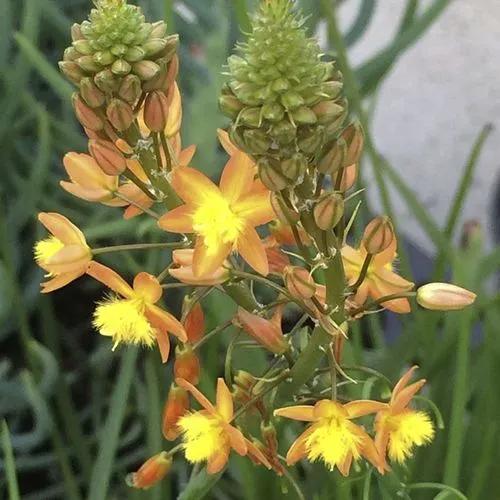Holcus lanatus is a perennial grass. The specific epithet lanatus is Latin for 'woolly' which describes the plant's hairy texture. Common names include Yorkshire fog, tufted grass, and meadow soft grass. In North America, where it is an invasive species, names include velvet grass and common velvet grass
Yorkshire Fog, Tufted Grass Care
Holcus lanatus



Holcus lanatus has velvety grey-green leaves. The stems are round. The bases of the stems are white with pink stripes or veins; this character has been called the "stripy pyjamas".The inflorescence is robust and often tinged purple. It produces a large amount of seed and is a rapid coloniser of disturbed ground. It prefers wetter ground; it is often seen around drainage ditches. The ligule is 1–4 millimetres (0.039–0.157 in) long, blunt, and hairy. This species can be distinguished from H. mollis by the beardless nodes on its culm, the absence of rhizomes, and the awn becoming hooked when dry and not projecting beyond the tips of the glumes. It has been known to hybridize with H. mollis, producing a male sterile hybrid with 2n = 21 chromosomes. Hybrids tend to resemble H. lanatus in their morphology. It spreads vegetatively by developing new shoots and roots at its nodes. Plants form a blanket of runners on the soil surface. Semi-prostrate rosettes of shoots called 'mops' may form at the end of the runners. These mops root readily in contact with moist soil. Habitat: A weed of pastures, open woodlands, grasslands, watercourses, swamps, wetlands, crops, roadsides, disturbed sites, waste areas, lawns and gardens in the temperate regions of Australia.
This plant might be poisonous
How to get rid of: The most effective control measure is physical removal by hand or with a hoe. Mowing or grazing, used in conjunction with prescribed burning, can also reduce plant dominance.
How to Care for the Plant

Popularity

290 people already have this plant 69 people have added this plant to their wishlists
Discover more plants with the list below
Popular articles






